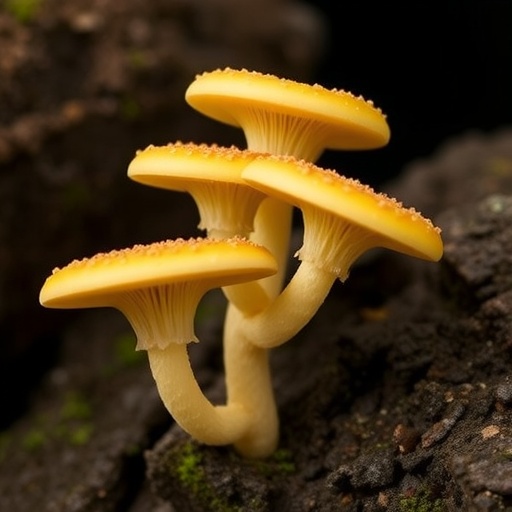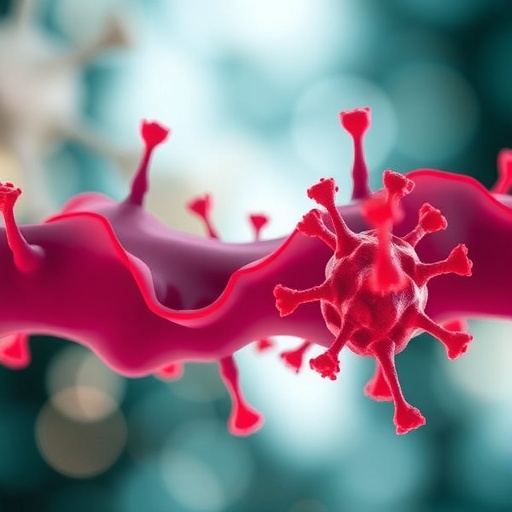In a groundbreaking development in the battle against sexually transmitted infections, researchers have unveiled novel compounds capable of combating the increasingly resistant Neisseria gonorrhoeae. This bacterium is notorious for causing gonorrhea, an infection that has been steadily becoming more challenging to treat due to a rising trend of multidrug resistance. Health officials and researchers alike are gravely concerned that the dearth of effective treatments will continue to worsen, underscoring an urgent need for innovative therapeutic options. This development arose from the efforts of a research team that has successfully synthesized a new class of compounds with significant antibacterial properties.
The compounds in question belong to a new class of kalafungin-type pyranonaphthoquinones, designated as thiofrenomycins A-C. These compounds were isolated from Streptomyces sp. MM863L-181F9, a unique strain sourced from fallen leaves, signifying the potential of natural products in drug discovery. The exploration of this particular bacterial strain was prompted by the need to find fresh alternatives to existing antibiotics, given the critical state of antibiotic resistance. The researchers conducted thorough investigations into this strain’s biological activity, which yielded these promising compounds.
The synthesis of these thiofrenomycin compounds involved a meticulously designed process, employing advanced organic chemistry techniques. Once the compounds were isolated, their chemical structures were elucidated using X-ray crystal structure analysis, revealing the absolute stereochemistry crucial to understanding their mechanisms of action. This detailed structural analysis will enable further studies on how these compounds interact with the bacterial targets, potentially leading to the formulation of effective therapies against gonorrhea.
One of the most striking aspects of these new compounds is their potency. In vitro testing has demonstrated that thiofrenomycins A-C exhibit minimal inhibitory concentrations (MICs) ranging from 0.125 to 16 µg/mL against N. gonorrhoeae. This range is exceptionally promising considering the alarming rise of resistant strains that current antibiotics often struggle to inhibit. By displaying activity at such low concentrations, thiofrenomycin A-C can be considered as potential front-runners for new therapeutic agents.
As the prevalence of multidrug-resistant N. gonorrhoeae escalates, the global healthcare community finds itself at a crossroads. In many parts of the world, the options for treating gonorrhea are reaching critical lows, rendering standard antibiotic regimens ineffective. This predicament emphasizes the necessity for ongoing research into novel antibacterial agents. The discovery of thiofrenomycin A-C is a beacon of hope, illustrating that nature may still hold the keys to overcoming some of the most pressing challenges in modern medicine.
The precise mechanism through which thiofrenomycin A-C exert their antibacterial effects is still under investigation. Preliminary studies suggest that these compounds disrupt vital cellular processes in N. gonorrhoeae, though researchers are keen to uncover the exact biochemical pathways involved. Understanding these nuances will be integral for not only assessing the efficacy of these compounds but also in guiding the optimization of their structures for maximum therapeutic benefit.
Furthermore, the implications of introducing thiofrenomycin compounds into clinical practice could extend beyond treating gonorrhea. The structural characteristics of kalafungin-type pyranonaphthoquinones may offer a framework for the development of a broader array of antibiotics, potentially effective against other resistant pathogens. This could pave the way for creating a new arsenal of drugs needed to address the ever-evolving landscape of infectious diseases.
The significance of this research lies not only in the compounds themselves but also in the methodology used. The approach of harnessing microbial biodiversity found in environmental samples, such as decaying leaves, amplifies the importance of exploring less-studied ecosystems for novel drug candidates. As such, researchers are encouraged to delve into alternative natural sources that may offer similar or even more effective antibiotic properties.
As the journey of thiofrenomycin A-C continues, further studies will be pivotal for determining their safety and efficacy in human subjects. Preclinical trials will need to be conducted, followed by clinical trials, before these promising compounds can be considered for routine clinical application. Nevertheless, the initial findings present a strong case for optimism in the fight against antibiotic-resistant infections.
While the path from the laboratory to clinical use is fraught with challenges, the caliber of this discovery may very well indicate a transformative step forward in infectious disease therapeutics. The dedication of researchers exploring the potential of natural products reminds us that solutions to our biggest health crises may be found in the most unexpected places.
In conclusion, the discovery of thiofrenomycin A-C represents a significant milestone in antibiotics research. As Neisseria gonorrhoeae continues to evolve and evade existing treatment options, the unveiling of these compounds highlights a critical avenue for future investigation and development. With the support of the scientific community and advances in research techniques, there is hope that these new antibacterial agents could translate into crucial therapeutic options, effectively addressing the global challenge of antibiotic resistance.
Subject of Research: The discovery and characterization of thiofrenomycins A-C, novel kalafungin-type pyranonaphthoquinone antibiotics from Streptomyces sp. MM863L-181F9.
Article Title: Thiofrenomycins, new kalafungin-type pyranonaphthoquinone skeleton with sulfide linkage from Streptomyces sp. MM863L-181F9.
Article References:
Kimura, T., Ishizaki, Y., Umekita, M. et al. Thiofrenomycins, new kalafungin-type pyranonaphthoquinone skeleton with sulfide linkage from Streptomyces sp. MM863L-181F9. J Antibiot (2025). https://doi.org/10.1038/s41429-025-00883-y
Image Credits: AI Generated
DOI: 21 November 2025
Keywords: Thiofrenomycin, Neisseria gonorrhoeae, antibiotic resistance, kalafungin-type pyranonaphthoquinone, Streptomyces sp. MM863L-181F9, drug discovery, microbiology, natural products, antibacterial agent.
Tags: antibiotic resistance crisiseffective treatments for STIsgroundbreaking research in microbiologyinnovative antibacterial compoundsmultidrug resistance in gonorrheanatural products in drug discoveryNeisseria gonorrhoeae resistancenew kalafungin-type pyranonaphthoquinoneorganic chemistry in synthesisStreptomyces sp. MM863L-181F9therapeutic options developmentthiofrenomycin A-C





